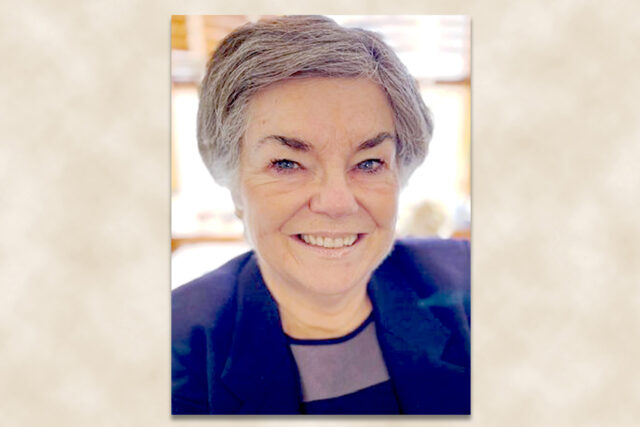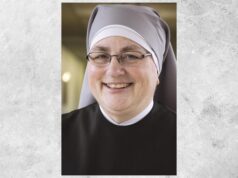It is a perfect fall day, the sun warm above us. A gentle breeze occasionally sends piles of fallen brown leaves scurrying across the street like a disciplined army of mice suddenly commanded into battle.
My almost 3-year-old granddaughter Alice and I are searching for Halloween decorations in my neighborhood. Alice and I agree: we like happy, colorful decorations.
We pass a yard with ghoulish statues. One, nearly as tall as Alice’s dad, looks like a zombie, a walking-dead type with a mean scowl. Next to him stands a fiendish-looking clown. Alice does not stray too far from me but stares at them for a long time. What questions pass through her little mind?
We find plenty of cheery pumpkins and happy, glittery black cats. And we chat. It suddenly strikes me that this is a contemplative time, a moment to store in memory, a gift of great value. A time alone with Alice, who is changing and growing each day.
Fall is my favorite time of year. It brings cooler days, the beckoning of winter, the gratitude of Thanksgiving. And first, the craziness of Halloween, and the celebration of All Souls and All Saints.
Fall seems like the appropriate time to confront our own mortality. This is, perhaps, not a pleasant topic to many. But to people of faith, it’s fundamental. It raises the important questions of what this short life is all about. When Jesus urges Martha not to worry about so many things, his reminder is for me as well: “There is need of only one.”
As flowers fade and the light leaves us earlier each evening, fall asks us yet again, what is that one thing we have need of?
Meister Eckhart, the 13th-century theologian, said, “If the only prayer you say in your life is thank you, it will be enough.”
Most saints and mystics point us to this foundational aspect of spirituality: gratitude comes first.
Sometimes, it’s hard to feel grateful. War in the Middle East, Ukraine, Sudan. Ecological degradation. Things in our world and in our national politics seem to splinter. Even in our own church, with a powerful synod listening to the Spirit, we hear the nagging voices of naysayers.
How, in a broken world, do we find gratitude, which leads us to that “one thing”?
I look to All Souls and All Saints. During Halloween, did you notice those decorations planted in yards, which made it seem like skeletons were emerging from the lawn, an arm here, some feet there? Yes, they’re at once silly and macabre, but at the same time a reminder. Remember, says that Ash Wednesday refrain, you are dust and to dust you will return.
On All Souls and All Saints, we honor not just the dead whom we love and extol as examples; we proclaim our belief that this is not the end — that from the hallowed ground of our beloved dead comes the promise of the risen Lord, the empty tomb.
Sometimes our culture hides from the thought of death. There is an old graveyard in Nebraska where my parents and great-grandparents are buried. Built on a hill surrounded by corn fields, this graveyard holds the remains of many Irish famine survivors. When I visit, I feel that powerful sense of connection which the Irish philosopher John O’Donohue described as a “thin place,” where that Catholic concept of things seen and unseen meet.
Little girls grow up, we age. Fall invites me, in the midst of this broken world, to pause and say thank you for each passing moment, turning to Jesus to see that “one thing.”
The Dialog provides readers news to your inbox with the Angelus e-newsletter. Sign up here for a free subscription to the Angelus.







